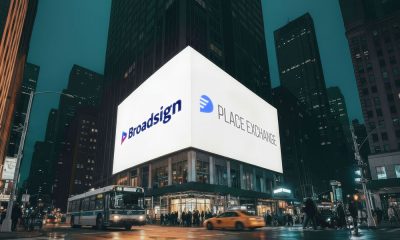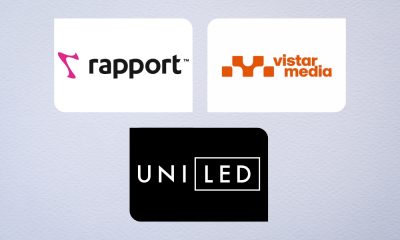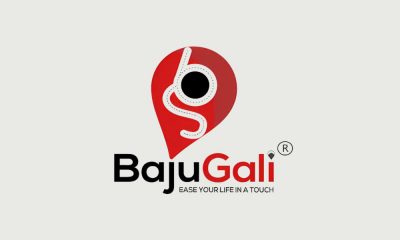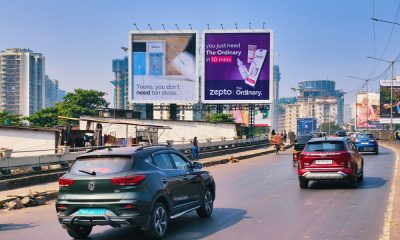International Events
Global experts on ‘Making OOH easier to buy through Automation & Programmatic’
WOO APAC Forum featured a power-packed panel headed by Charles Parry-Okeden, CEO, ECN with discussants — Andy Hamblin – CRO, LDSK; Franck Vidal, Director, Southeast Asia Sales & Partnerships, Vistar Media; Frank Vallenga, VP of Sales (SaaS), Broadsign; Matthew Bushby, Managing Director of Hivestack ANZ + SEA, Srikanth Ramachandran, Founder & Group CEO, Moving Walls
‘Making OOH easier to buy through Automation & Programmatic’ was a key theme for discussion in the WOO APAC Forum held in Bali. In a panel on this theme moderated by Charles Parry-Okeden, CEO, ECN, Australia industry experts — Andy Hamblin – CRO, LDSK; Franck Vidal, Director, Southeast Asia Sales & Partnerships, Vistar Media; Frank Vallenga, VP of Sales (SaaS), Broadsign; Matthew Bushby, Managing Director of Hivestack ANZ + SEA, Srikanth Ramachandran, Founder & Group CEO, Moving Walls — shared their insights, experiences, and challenges related to the adoption of automation and programmatic in OOH advertising. This evolving landscape is transforming the way advertisers plan and purchase OOH advertising, with a focus on automation, efficiency, and data-driven decision-making.

The panel discussion began with an overview of the current state of programmatic adoption in Europe. The panellists discussed their experiences and success stories, highlighting the rapid growth in programmatic revenue over the past year. For example, in Europe, programmatic revenue accounted for more than 20% of total revenue, and in Germany, it exceeded 35%. This success underscores the significant revenue benefits achieved by connecting OOH inventory to multiple sales channels. Programmatic and automation have proven to be valuable tools for driving revenue in the OOH sector, prompting industry players to embrace technological advancements at an accelerating pace.
The conversation then delved into the importance of ease of planning and buying in OOH advertising. The panellists emphasised that customer feedback plays a crucial role in shaping their strategies. Buyers are increasingly demanding innovation, adaptability, and integration with the connected planning ecosystem. Surveys conducted in Australia revealed that relationship and ease of dealing were the top priorities for media buyers when dealing with media owners. These factors were especially critical for OOH media buyers, emphasising the significance of streamlining the planning and buying process.
The panel discussed how ease of planning and buying has been a key topic of discussion within the industry. The global trend towards greater automation and efficiency was highlighted, with emphasis on the fundamental role of ease of planning and frictionless automation in achieving business objectives. The experts underlined the importance of embracing technology to become better, smarter, and faster in the OOH advertising space.
Furthermore, the panel noted that there are two categories of media owners: those embracing technological opportunities and those who are hesitant to do so. The fact that media owners embracing the opportunity to act differently will have a greater share of the market underscored the urgency for industry players to adapt. The panellists emphasised that the time to embrace automation and programmatic technology is now, and they encouraged media owners to start their journey towards automation.
One of the significant highlights of the discussion was the timeline for achieving full automation in the OOH sector. The panellists agreed that within five years, all OOH advertising would be planned and transacted entirely through automation. This timeframe emphasised the rapid pace of change in the industry and served as a call to action for all media owners.
They addressed the barriers and challenges faced in the adoption of automation and programmatic technology in OOH advertising. The primary challenge discussed was the need for a unified currency for measurement and trading in the industry. Achieving consistency in metrics and measurements remains a hurdle, and industry players need to work towards standardization to facilitate automation. This challenge, while significant, was considered more as an excuse than a genuine barrier to progress.
One of the panellists, pointed out that the key to overcoming these challenges lies in shifting the perspective and understanding that technology investment is essential for the growth and transformation of the OOH sector. He emphasised the need for media owners to embrace change and invest in technology to succeed in the evolving advertising landscape.
The conversation turned to the role of digital agencies and the importance of engaging with digital agencies that speak the language of automation and programmatic. The panellists highlighted the need to bridge the gap between traditional media agencies and digital agencies, as they often have different perspectives and priorities. Engaging with digital agencies has proven to be a successful strategy for media owners looking to unlock new revenue streams through programmatic advertising.
The growth of programmatic advertising in various markets was discussed too. They noted that every market evolves at its own pace, with some markets being more advanced in demand and others in supply. For example, in Indonesia, publishers are moving toward supply-side platforms (SSPs), while demand for demand-side platforms (DSPs) is on the rise. They together identified that emerging markets like Thailand and the Philippines offer significant growth opportunities for programmatic advertising in the coming year.
The role of programmatic in transforming the buying process for advertisers was greatly emphasised on. Programmatic allows for more dynamic and data-driven campaigns, enabling advertisers to target specific audiences, optimise content, and react quickly to changing circumstances. Real-world examples of programmatic campaigns were shared, illustrating how advertisers have used automation to deliver highly targeted and contextually relevant OOH advertising.
The conversation concluded with a discussion about the future of OOH advertising and the potential for deep learning and audience-based campaigns. Audience-focused advertising and innovative approaches to campaign management were highlighted as the way forward. The importance of offering flexibility in campaign execution and adapting to the needs of different buyers was specifically underlined.

























